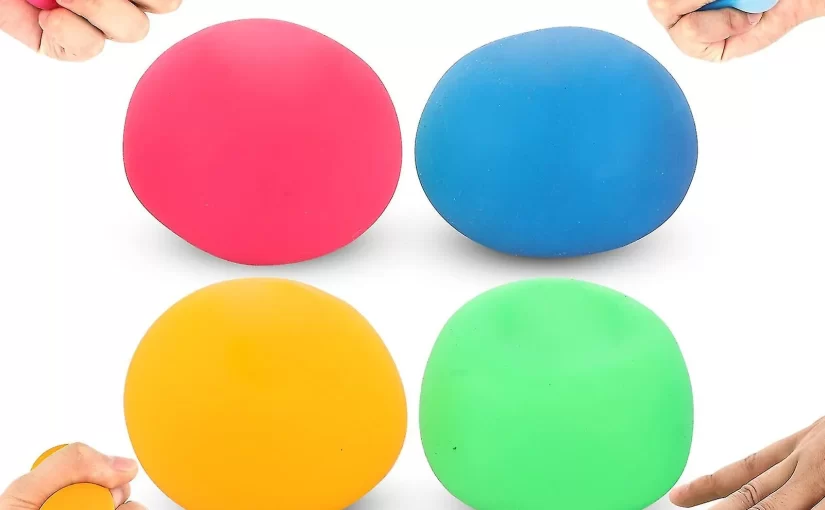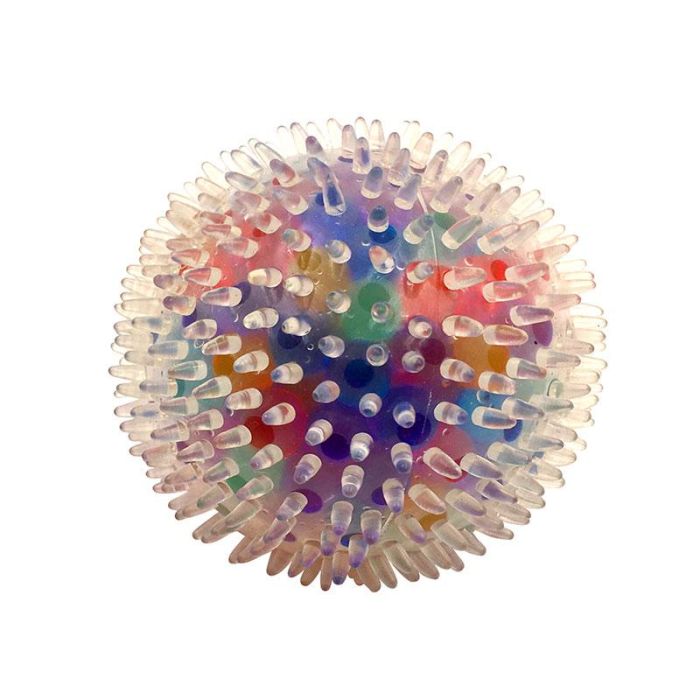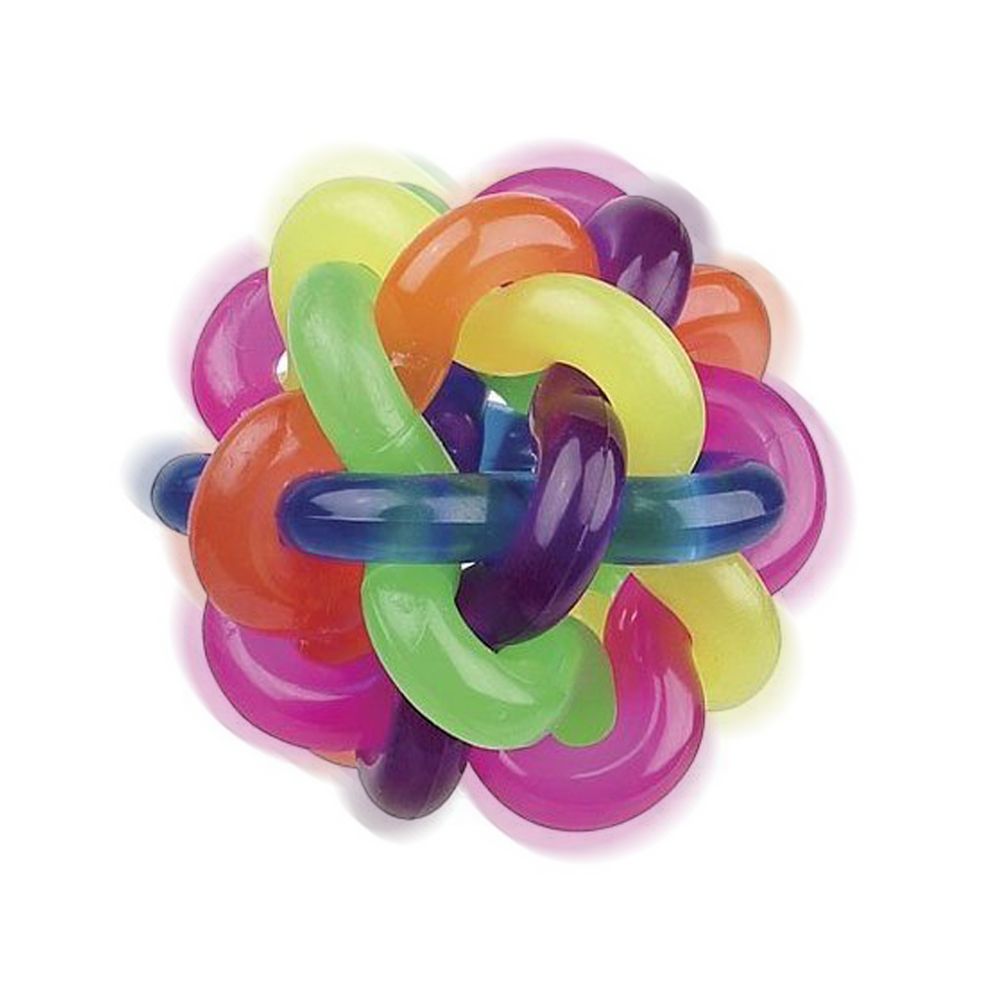Introduction to Stress Balls
Stress balls are small, versatile tools designed to help ease tension and enhance focus. Often used in therapy, work environments, or during study sessions, stress balls serve as a practical solution for managing everyday stress. By providing a simple, repetitive activity, they can significantly aid in calming nerves and improving concentration.
What Are Stress Balls?
Stress balls are small, malleable objects filled with either gel, foam, or rubber. They fit comfortably in the palm of a hand. Users typically squeeze and release these balls repeatedly to relieve stress and tension. Suitable for all ages, these balls are not only functional but also portable, making them easy to use anywhere.
How Stress Balls Promote Sensory Relief
Squeezing a stress ball creates a physical activity that can distract from stressors and help redirect energy constructively. For individuals with sensory processing issues, the texture and resistance of a stress ball sensory can provide a calming effect. The repetitive motion helps increase blood circulation, potentially easing muscle tension and promoting a state of relaxation.
Types of Stress Balls Available
Selecting the ideal stress ball sensory tool goes beyond just picking any ball. It involves understanding the different types available and their unique properties. Here are the main types you should be aware of:
Foam Stress Balls
Foam stress balls are lightweight and offer a soft resistance when squeezed. They often come in various shapes and sizes, catering to personal preference. Easy to grip, these balls suit people looking for gentle muscle activation without much effort.
Gel-filled Stress Balls
Gel-filled stress balls provide a squishier feel and they may come in different levels of firmness. They can simulate a massage for the palm and fingers, which can be especially relieving for those who prefer a more tactile experience. The viscosity of the gel also allows for a slower release, prolonging the stress-relieving action.
Rubber Stress Balls
Rubber stress balls are more durable and offer greater resistance. This makes them ideal for individuals seeking to strengthen their grip or for those who might find solace in a more strenuous squeeze. Their elasticity ensures they retain shape even after continuous use, making them a long-lasting option.
Each type of stress ball sensory provides unique benefits. While some prefer the soft embrace of a foam ball, others may find the firmness of a rubber or gel-filled option more satisfying. It’s essential to consider personal sensory preferences when choosing the best stress ball for your needs.
Benefits of Using Stress Balls for Sensory Relief
Incorporating stress balls into your daily routine can have several advantages for both physical and mental well-being. Understanding these benefits can help you make better use of this simple yet effective tool.
Physical Benefits
Using a stress ball sensory regularly contributes to physical health in various ways. Firstly, it enhances hand strength and dexterity. Regular squeezing improves muscle tone and blood circulation in the hands and forearms. This is particularly beneficial for those who engage in tasks requiring fine motor skills. Secondly, it can help reduce physical tension and prevent conditions like arthritis and repetitive strain injuries. The continuous compression and release motion helps keep joints and muscles in the hands limber.
Mental Health Benefits
Stress balls are not just good for physical health; they have profound mental health benefits as well. They serve as a therapeutic tool for anxiety relief. Engaging with a stress ball provides a focal point for restless energy, which helps calm the mind and decrease feelings of stress. Moreover, this focus aids in better concentration and productivity, especially important in high-stress environments like offices or during examinations. Regular use of stress ball sensory can also evoke a meditative state, aiding overall emotional stability.
How to Choose the Right Stress Ball
Choosing the appropriate stress ball sensory tool requires thought into its material and texture. Here are key factors to consider:
Considering Material and Texture
The material of a stress ball determines its feel and durability. Foam stress balls are soft and compress easily, ideal for gentle stimulation. Gel-filled balls offer a squishy texture, providing a massage-like experience. Rubber stress balls are the toughest, offering strong resistance and are long-lasting. The texture is also crucial for sensory feedback. Smooth balls provide less sensory input, while textured surfaces can enhance the sensory experience. This feature is especially beneficial for those who need sensory stimulation to focus or relax. Match the material and texture to your sensory preferences to get the maximum benefit.
Size and Resistance Levels
The size of the stress ball affects how well it fits in your hand. Too large, and it becomes difficult to squeeze comfortably. Too small, and it may not provide enough resistance to be effective. Aim for a size that allows for a full grip without straining your hand. Resistance levels also matter. Lower resistance is better for stress relief and relaxation, while higher resistance can help in strengthening hand muscles. Assess your needs—whether for calming, concentration, or physical therapy—to select the appropriate resistance level. A perfect match in size and resistance will ensure that your stress ball sensory serves its intended purpose effectively.
Best Practices for Using Stress Balls
To get the most from your stress ball sensory tool, the way you use it matters. Here are a couple of best practices to bear in mind.
Frequency and Timing of Use
Using stress balls often can lead to better results. Aim for a few minutes of squeezing and releasing during times of high stress. This can be during a work break, while watching TV, or before a stressful event. Consistency is key. Daily use can help maintain the benefits for your mind and body.
A good rule of thumb is to use your stress ball when you start to feel early signs of tension. This proactive approach prevents stress from escalating. Keep a stress ball handy in places where you often need it. This could be at your desk, in your car, or in your bag.
Combining with Other Sensory Tools
Stress balls work well with other sensory tools for a more comprehensive approach. Consider pairing your stress ball sensory exercise with deep breathing techniques. This can further enhance relaxation.
You might also find it helpful to alternate between different stress balls. A textured ball can provide varied sensory input after using a smooth one. For a full sensory experience, try using stress balls with essential oils or warm-up exercises for your hands. Integrating these strategies can help address stress from multiple angles.
Conclusion
Choosing the right stress ball sensory tool is an important step in managing stress. It’s not just about picking any ball; it’s about finding the one that meets your specific sensory needs. To recap, consider the material, texture, size, and resistance level of the stress ball. Foam stress balls are great for a soft touch, gel-filled ones offer a massage-like feeling, and rubber stress balls provide the most resistance.
Incorporate stress ball sensory into your routine for better physical and mental health. Use them regularly to strengthen hand muscles and improve circulation. They are equally valuable for mental well-being, helping to relieve anxiety and enhance focus.
Remember to use your stress ball during times of high stress and keep it within reach for those crucial moments. Don’t hesitate to combine the use of stress balls with other sensory tools for an all-around approach to stress management. In doing so, you’ll be taking proactive steps toward a calmer, more focused life. With the right stress ball by your side, sensory relief is literally in the palm of your hand.



